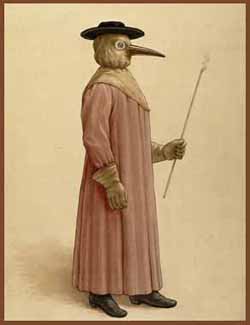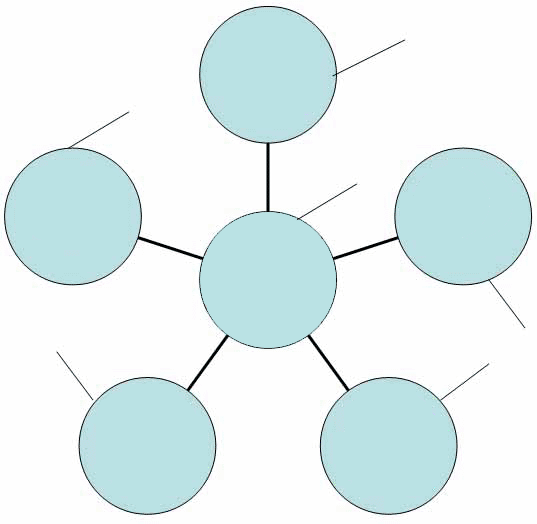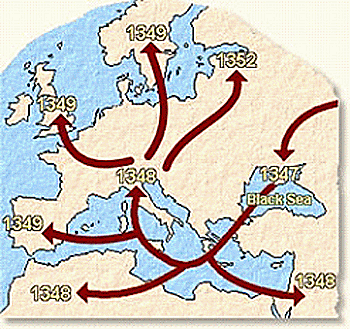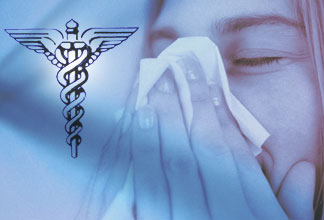Lesson 1
Essential Question
- What can be learned from studying the effects of a pandemic in one time and place?
Background
Although it had struck ancient Europe in the past, the Black Death, or bubonic plague, returned to European civilization in 1348, spreading westward from Asia. Within a few years, up to 50% of the population in European nations had died.

© Wellcome Library, London
The long gown in the above image, made of waxed linen, hid the identity of the physician. His clothing was designed to protect him from exposure to disease. The stick was used to remove the clothes of the patient or the corpse, while the beaked mask contained herbs to filter or purify the air, since the theory was that the plague arose from vapors or "miasmas."
Image Source: www.makingthemodernworld.org.uk
The most common form of the plague (bubonic) gave the disease its common name. Swellings appeared on a victim's neck, armpits or groin that usually signaled the victim had a few days to live. This highly contagious disease was spread through the bites of infected fleas on rats and humans. Other forms of the plague attacked the respiratory and circulatory system.
Without useful medical technology or any way to understand the scientific causes of the disease, Europeans gave numerous reasons for it – some religious, some supernatural, and some worldly – and responded to its deadly effects in ways that can tell us about how people lived in the 14th century.
Instructional Strategies
 |
Strategy 1 |
Gathering Information: Inquiry and Questioning Skills
Post the essential question for students. Conduct a Think/Pair/Share activity in which students consider possible responses which might be used to guide the research into the causes and effects of a pandemic disease. Work from individual association to sharing with a partner and then collaborating as a group to develop the research web.
Place the questions created by students in a graphic organizer web.
What can be learned from studying the effects of a pandemic in one time and place?

Note to Teacher:
The individual questions that the students identify should become part of an overall strategy of research -- the problem of where and how to find the answers. Ask students to develop a research strategy as a class that would help them answer the essential question.
Avoid student responses that lack specificity. Some might suggest "the internet" or "books," but such a response is too vague. What type of internet site (i.e. museum of a place affected by a pandemic) would be useful? A historical researcher might start with finding a collection of those types of internet sites as a strategy.
Check for Understanding = Formative Assessment
You are asked to research the effectiveness of the Red Cross in helping refugees from New Orleans after Hurricane Katrina (2006).
- What words would you type into a search engine to maximize the efficiency and accuracy of your research?
 |
Strategy 2 |
Extending and Refining: Historical Research Skills
Have students work in pairs to uncover and discuss what each knows about life in medieval Europe, and the causes and/or effects of the plague that hit medieval Europe in the 14th century. As a guide, students should use a research web placed in the context of the Black Death.
Have students research online, from their textbooks, or from a short video. Students should compile their notes in a chart like the one below that discusses life in medieval Europe, and the causes and/or effects of the plague that hit medieval Europe in the 14th century.
Students should create an annotated bibliography like that required for the National History Day contest. The site includes examples and instructions.
Medieval Europe |
Black Death |
Black Death |
|
Possible primary historical sources:
The Florentine ChroniclePossible secondary historical sources (some contain primary evidence):
Ordinances for Sanitation in a Time of Mortality
Black Death
The Black Death's lasting impact on British society
The Black Death, 1348
Black Death in the Middle Ages
England’s Green and Pleasant Land
The Black Death
What was it really like to live in the Middle Ages?
The Black Death
Teachers with access to Discovery Education's United Streaming® might choose this video for students to watch: Black Death (1347-1351 A.D.), The. United Learning. 1997. unitedstreaming. 24 April 2006 http://www.unitedstreaming.com/.
 |
Strategy 3 |
Extending and Refining: Historical Interpretation
Have students examine and interpret artwork that depict the plague.

Gabriele de' Mussi gave this account of the 1348 Italian plague:
"Tell, O Sicily, and ye, the many islands of the sea, the judgments of God. Confess, O Genoa, what thou hast done, since we of Genoa and Venice are compelled to make God's chastisement manifest. Alas! our ships enter the port, but of a thousand sailors hardly ten are spared. We reach our homes; our kindred and our neighbors come from all parts to visit us. Woe to us for we cast at them the darts of death! Whilst we spoke to them, whilst they embraced us and kissed us, we scattered the poison from our lips. Going back to their homes, they in turn soon infected their whole families, who in three days succumbed, and were buried in one common grave. Priests and doctors visiting the sick returned from their duties ill, and soon were numbered with the dead. O death! cruel, bitter, impious death! which thus breaks the bonds of affection and divides father and mother, brother and sister, son and wife. Lamenting our misery, we feared to fly, yet we dared not remain."
Sites for more artwork:
- The Plague: An Abiding Scourge
(click on the individual images for close-ups) - Earthly Assistance: Good Works in Time of Plague
(click on the individual images for close-ups) - Heavenly Assistance: God and the Saints
click on the individual images for close-ups)
Check for Understanding = Formative Assessment
- How do primary sources reveal the way in which medieval Europeans reacted to the plague? Explain your answer with historical evidence.
 |
Strategy 4 |
Application: Discussion Web
Have students use research collected in Strategy 2 to conduct a discussion web in which they respond to a question. The question for this discussion web is:What can be learned from studying the historical effects of the 14th century Black Death pandemic in Europe?
How to conduct a discussion web:
- A student draws on research conducted in the previous strategy, the class textbook, from previous classroom discussions, and from personal experiences as he/she thinks about the question and discusses with a partner.
- The partners must come up with evidence that supports a response. Opinions are fine as long as they are supported by information from the text or by personal experience.
- Then the partners are paired with another set of partners to form a discussion group. The members of the group share their responses. Together, they reach a consensus on a point of view. Then student groups have the opportunity to share their point of view with the entire class.
- As a follow-up, students might be asked to debate the question, to support and write their individual opinions, or to discuss as a class.
Check for Understanding = Formative Assessment
- This map shows the path the plague might have taken as it spread from Asia across Europe in the 14th century.

Which is most likely responsible for the path of the plague’s spread?
- medieval trade routes*
- invading armies
- religious crusades
- funding of exploration
- How might the way in which medieval Europeans have lived helped to spread the Black Death? Explain your answer with historical evidence.

 Module Menu
Module Menu Printable View
Printable View

